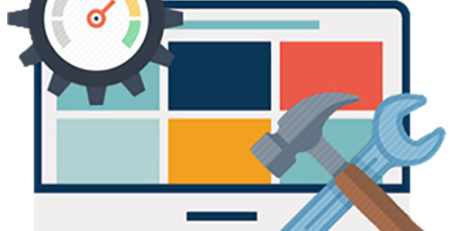Mobile vs. Responsive
A website that is optimized for mobile users is likely to be high on the list of requests from businesses and other organizations that are thinking about setting up a new website. However, there are advantages and disadvantages to consider with each approach. One common approach is to create a mobile “friendly” website; a mobile friendly website will work on any handheld device (such as a smartphone) or tablet. A more advanced web design is one that is mobile “optimized.” A mobile optimized site will reformat itself for a list of handheld or tablet devices. Larger navigation buttons, reformatted content, and differently optimized images appear when the user is on an iPhone or another device. In this blog, we will be discussing the pros and cons of mobile vs. responsive design.
The Advantages Of Mobile Design
The advantages of mobile design are that it creates a customized experience for your users, it is also less expensive than some other options. Mobile optimized websites offer pluses in terms or marketing as well since Google and many other search engines are rewarding sites that custom tailor experiences for each viewing audience. One final advantage is that they offer more control for designers and developers that don’t want to deal with various screen sizes. Nevertheless, there are certain downsides to this type of approach. One problem that can arise is that marketing becomes more complicated because of duplicate site issues and an improper setup could hurt your ability to have an effective SEO. It is also important to note that having a dedicated mobile site could mean creating and updating two or more copies of everything you post, adding time and expense to upkeep.
Go Responsive In Your Web Development
In contrast to the mobile optimized technique, a responsive design approach creates a single website that allows desktop web pages to be viewed in response to the size of the screen or web browser that the user is viewing with. In other words, the website adapts or “morphs” based on whatever device your customer is using; an iPhone would display one type of screen while a tablet would display another and so forth. However, there would only be one website to maintain and update. Therefore a site with RWD (Responsive Web Design) will handle all different devices and require far less time to keep current. Furthermore, RWD will tend to be less expensive over time typically responsive web design is a part of most website development today and should be relatively painless to maintain. If your current website is over two years old, you may want to consider going through a redesign process that utilizes RWD to keep your site current and the experience fresh for your customers. One caveat to consider is that RWD is still relatively new therefore the design conventions are also new and may tend to change and evolve over time.
The professionals at Cloud Talk USA are ready to assist in advising you as to what type of approach may work best in your particular circumstances. Contact us for all your web development needs!













